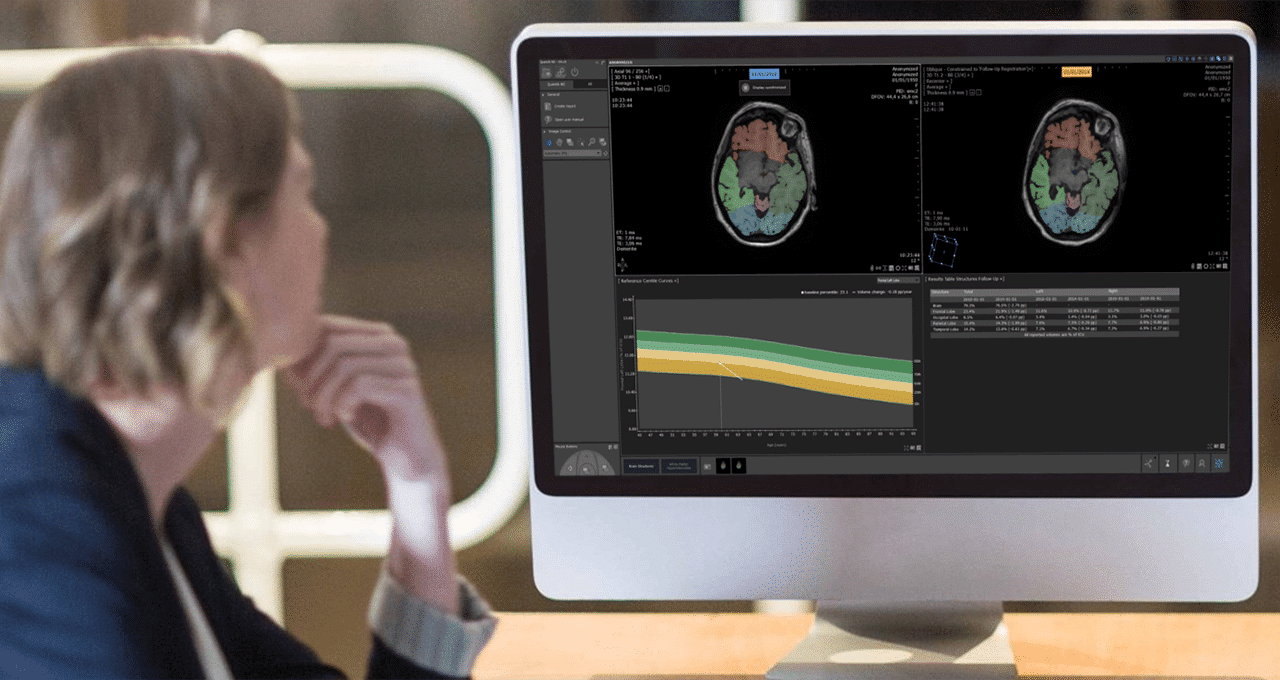Dementia diagnosis starts with uncertainty — patients or their family members make an appointment after noticing symptoms that suggest something’s wrong.
It may take months or years to reach a final diagnosis, as doctors must observe how a patient’s condition progresses over time.
Radiologists don’t typically have serial quantitative brain data — calculated measurements of a patient’s brain structures taken at different times — on hand during this process. They rely instead on visual assessments of the scans, rating a patient’s brain atrophy levels on a four or five-point scale.
Experts rely on these qualitative scores because even when serial scans are available, it would take radiologists inordinately long to quantify the data, as they have to calculate brain structure volumes by hand.
“It’d just be too expensive to let radiologists do that,” said Jorrit Glastra, chief technology officer of Quantib, a Netherlands-based startup using deep learning to tackle this problem.
AI can accelerate the analysis of brain MRI data, taking just a few minutes to generate a report of structure volumes for radiologists and neurologists, who work together to study a patient’s scans and cognitive test results. Looking at the hard numbers can help experts more easily measure the change in a patient’s brain over time, shortening the time to diagnosis.
“The longer disease diagnosis is delayed, the more care a patient will need and the higher the costs,” Glastra said. “It’s very valuable to diagnose cases early.”
A member of the NVIDIA Inception program, Quantib trains its deep learning algorithms on NVIDIA V100 and K80 GPUs. Its AI software, Quantib ND, is FDA cleared in the United States and CE marked in Europe.
The company’s technology is installed in around 20 countries across Europe, North America and Asia.
AI’ll Do the Math
Dementia affects 50 million people worldwide — a figure expected to grow in coming years as life expectancy rises. Artificial intelligence tools like Quantib ND can help radiologists monitor disease progress in patients and diagnose new cases earlier.
Quantib ND quantifies brain atrophy by segmenting brain structures and white matter hyperintensities, which signify the level of disease-induced damage in the brain.
Radiologists can also use the tool to compare a patient’s brain tissue volumes to a reference library of MRI scans. This database makes it easier to determine whether a patient’s brain is showing normal aging or not.
Based on a dataset of 5,000 brain scans, Quantib ND’s AI can differentiate between brain atrophy patterns indicative of Alzheimer’s disease and ones associated with other kinds of dementia. The tool can also be used to compare an individual patient’s scans over time to determine how a disease is progressing.
Beyond the Brain
Quantib is also building deep learning solutions for oncologists detecting prostate cancer and breast cancer. Its AI algorithm for prostate cancer, currently in development, can segment, classify and predict the state of suspicious lesions from MRI scans. Doctors can then use these insights to determine which lesions to target with a biopsy.
The company’s breast cancer screening AI analyzes MRI scans for women with high breast density — an independent risk factor for developing breast cancer. Radiologists and oncologists use these scans to determine if a patient will require a biopsy.
Glastra said for both breast and prostate cancer screening, the AI must analyze a set of multiple images from different time points. The complexity of the deep learning task demands powerful computation tools for inference.
“For breast cancer screening, the data volume going into that set of scans is unbelievable. It’s several orders of magnitude higher than the brain,” he said. “Running inference on the types of models that can handle those inputs can only be done with GPU support.”
Quantib benchmarked the performance of its prostate cancer AI using the 70-watt NVIDIA T4 GPUs for inference — and found the algorithms run 24x faster compared to using a CPU cluster with the same power usage.
“For on-premises inference,” Glastra said, “the low-power footprint of the T4 makes it a very attractive option.”
